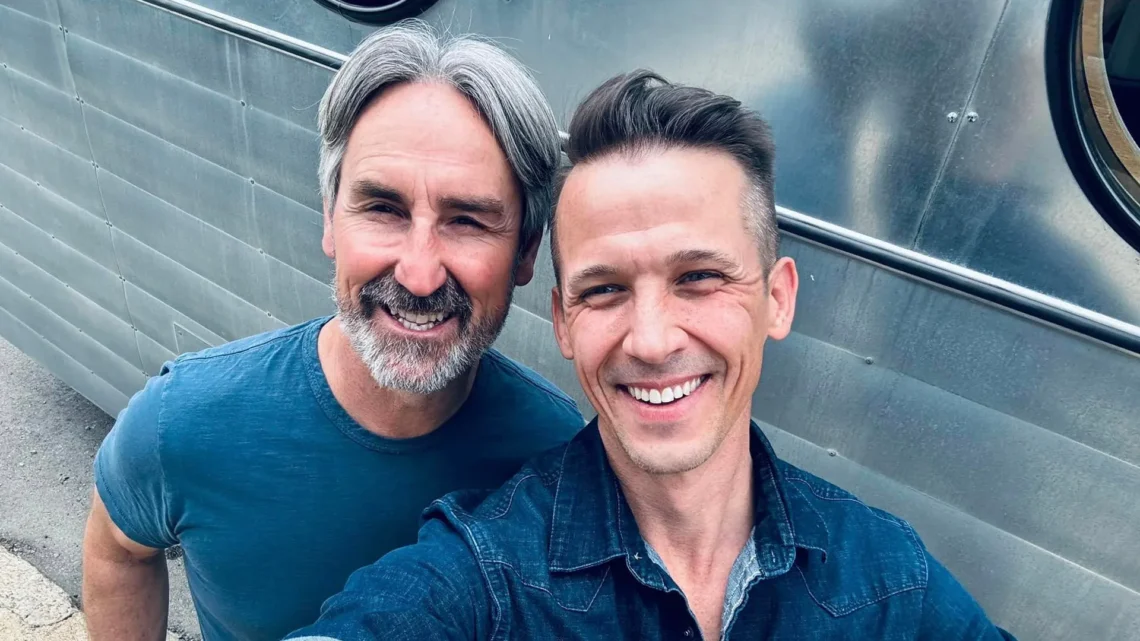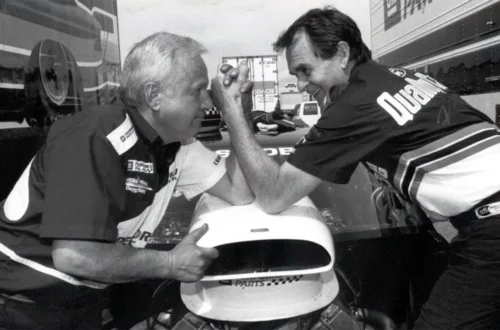1. The Roots of the Passion Project
Mike Wolfe Passion Project traces its roots back to his childhood in Bettendorf, Iowa. As a kid, Mike found comfort not in video games or cartoons but amid dusty barns, forgotten tools, and flea-market corners. To pieces of rusted metal or old signs, most people saw junk—Mike saw stories. Each scatter of relics whispered of old gas stations, family businesses, and local craftsmanship, anchoring him to the American past in a deeply personal way.
As he grew up, this fascination only deepened. He began to treat these forgotten items not just as curiosities but as portals into heritage—each one deserving of rescue, restoration, and a proper place in the story. This emotional connection to everyday artifacts laid the groundwork for what would eventually expand into something much larger than simple collection.
When American Pickers debuted in 2010, it was more than entertainment. It offered a lens into human legacy, with Mike uncovering not just rare items, but tales of craftsmanship and small-town pride. That show introduced millions to the ethos that underpins his passion project today: the belief that forgotten pieces of Americana are worth saving—one barn find at a time.
2. From Picker to Preservationist
While American Pickers brought recognition, it only fueled Wolfe’s deeper ambition—to move from picking objects to preserving cultural spaces. He realized that the stories embedded in old buildings and Main Street storefronts mattered as much as those in loose artifacts. What if an old bike or sign isn’t enough? What about the architecture that sheltered them? What about the communities that created them?
That shift marked his transformation from collector to preservationist. He began to invest in historic buildings—especially those neglected in small towns—in hopes of restoring their integrity, purpose, and role in the community. This wasn’t just about aesthetics; it was about honoring the architecture, identity, and economic potential embedded in these structures.
3. Revitalizing Small-Town America
Central to Mike Wolfe passion project is the revival of small-town America. These towns, often overlooked or left behind in modern times, hold the pulse of the country: the old diners, local hardware stores, vintage gas pumps, and classic storefronts. By restoring buildings in towns like Columbia, Tennessee—and bringing them back into meaningful use—Wolfe isn’t just fixing walls; he’s restoring civic pride.
In Columbia, for instance, abandoned storefronts were transformed into communal hubs—art galleries, local makers’ spaces, gathering places—imbuing vibrancy back into the town’s heart. These thoughtful restorations won’t raise skyscrapers, but they do ignite local economies, attract visitors, and remind community members of what they still hold dear.
Through this work, Wolfe demonstrates how preservation and community revival can be mutual—buildings become engines for economic opportunity and social connection, while towns regain a sense of identity that had been fading.
4. Antique Archaeology: Living Museums
Mike Wolfe’s passion isn’t confined to old barns; it lives in his antique-themed storefronts—Antique Archaeology in LeClaire, Iowa, and Nashville, Tennessee. These aren’t your typical antique shops. Walking into one feels like a collage of nostalgia—gas pumps, motorcycles, signage, and handmade relics from bygone eras, each with a curated story.
Visitors don’t just shop—they explore. Every piece is intentionally displayed to spark curiosity and wonder about how things were once made, used, and cherished. Wolfe’s stores embody his belief: preservation isn’t about hiding relics in archives; it’s about sharing them through tangible, interactive spaces that feel alive
5. Storytelling at the Core
At the heart of the Mike Wolfe passion project beats a simple truth: every object, building, and maker has a story worth telling. He approaches restoration like an archivist meets anthropologist—every artifact has emotional value. Whether it’s a neon sign that lit up a roadside café or a hand-forged tool passed down generations, Wolfe records—in words, pictures, and conversations—what the pieces meant to people.
He extends these stories through blogs, social media, local workshops, and video content, inviting audiences in—not just to admire, but to connect. It’s this narrative power—transforming relics into storytelling vessels—that elevates his project from restoration to community memory-making.
6. Celebrating Craftsmanship
In a world flooded by mass-produced goods, Wolfe’s passion project stands up for craftsmanship. He celebrates the hands, tools, and minds that built things. Whether it’s a 1930s Indian motorcycle or a barn beam carefully hand-hewn decades ago, he treats these items as testaments to skill, creativity, and perseverance.
He supports modern day artisans—woodworkers, metalworkers, restorers—committing not just to preserving old objects, but also inspiring new makers. His platforms amplify these craftspeople, reinforcing the value of handmade heritage in an age of disposability.
7. Architecture as Narrative
To Wolfe, architecture isn’t bricks and mortar—it’s storytelling. Every building that’s been restored has a voice. He emphasizes maintaining the building’s original character, opting for preservation over modernization whenever possible. These spaces—historic galleries, cultural centers, community venues—are both functional and narrative-rich.
By preserving architectural integrity and repurposing spaces, Wolfe connects the past with the present. Old buildings stopped being relics; they become backgrounds for new stories—stories about artistry, community, and continuity.
8. Sustainable Revival and Economic Impact
Sustainability isn’t just environmental—it’s cultural and economic. Wolfe practices adaptive reuse—breathing new life into old structures—rather than tearing them down. This reduces waste, honors craftsmanship, and anchors green practices in history.
Moreover, communities benefit financially: restored downtowns attract tourists, host new businesses, and generate local pride. His project illustrates how preserving the past can infuse towns with modern vitality, blending ecological responsibility with local prosperity.
9. Modern Storytelling Channels
Mike Wolfe’s mission marries heritage with high-tech storytelling. Beyond TV, he leverages blogs, Instagram, YouTube, and workshops—bringing his restoration-driven narratives to broader audiences. Viewers can follow restoration progress, enter restoration sites virtually, and connect emotionally to places they may never visit.
By embracing digital platforms, he ensures that heritage resonates with younger generations, making preservation accessible—and even aspirational.
10. Notable Projects and Their Stories
Some standouts in Wolfe’s passion project include:
-
Columbia, Tennessee: Downtown building ambitions transformed into vibrant community spaces with local artisans and cultural events.
-
Rural Town Restoration: Towns like Greenville, Kentucky saw renewed civic pride, thanks to architecture rehabilitation that preserved local aesthetics
These projects serve as real-life proof that preservation can be both emotive and practical, reviving towns one structure at a time.
11. Inspiring a Movement
Wolfe’s passion is contagious. He inspires individuals and communities to take tangible steps: explore local antiques, attend restoration events, volunteer with heritage groups, and tell stories of local pasts. His public appearances, talks, and collaborations with nonprofits help spread preservation’s accessibility and impact.
He shows that preservation isn’t exclusive—it’s participatory. You don’t need a TV budget—just passionate hands and shared respect for history.
12. Why Mike Wolfe Passion Project Truly Matters
In a fast-paced world focused on the new and shiny, Wolfe’s passion stands out as a tribute to what made us who we are. He reminds us that rust, wood, brick, and steel are more than materials—they are memory, identity, and craftsmanship incarnate.
Through restoration, storytelling, and community revival, Wolfe fosters a connection between past and present, between makers and observers. His project proves that caring for history isn’t backward—it’s visionary. It preserves not just heritage, but also hope—for rooted futures, craftsmanship, and thoughtful community.
Conclusion
Mike Wolfe passion project is a graceful blend of nostalgia and purpose. From humble childhood scavenging to restoring Main Street architecture, his mission champions storytelling, community, craftsmanship, sustainability, and cultural preservation.
He doesn’t just restore relics—he reconnects people to heritage, invites them to explore craftsmanship, and nudges them to preserve their own stories. In every restored storefront and in every shared tale, his passion breathes life back into the American narrative. And that, more than anything, is worth saving.




